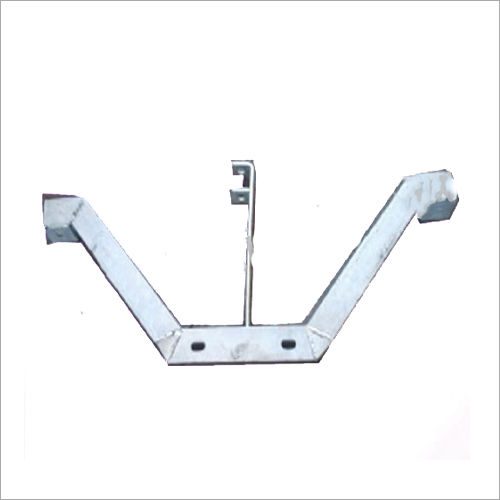
V Cross Arm
Product Details:
- Material Stainless Steel
- Surface Treatment Polished
- Color Silver
- Click to View more
V Cross Arm Price And Quantity
- 5000 Piece
- 840.00 - 900.00 INR/Piece
V Cross Arm Product Specifications
- Polished
- Silver
- Stainless Steel
V Cross Arm Trade Information
- 15000 Piece Per Month
- 2 Days
- All India
Product Description
The name "V cross arm" refers to how it looks like the letter "V." Typically, it is made of a strong, long-lasting substance like wood, steel, or fibreglass composite. Due to its availability, robustness, and affordability, wood is a frequently used material, and steel and fibreglass cross arms provide extra durability and resilience to external variables.
A V cross arm's main purpose is to offer a solid and secure platform for fastening electrical wires, insulators, and other hardware required in the architecture of power lines. It aids in maintaining the conductors' ideal spacing and placement, enabling secure and effective power transmission or distribution.
Typically, hardware like bolts, brackets, or straps are used to fasten the V cross arm to the utility pole. The arms of the V are extended outward from the pole, and it is fastened in a horizontal position. The number of conductors, the voltage rating of the power lines, and the particular installation requirements can all affect the cross arm's size and arrangement.
For overhead electricity lines to be reliable and safe, V cross arms must be designed, installed, and maintained properly. The cross arm should have a strong structural foundation and be able to endure any mechanical strains, bad weather, and electrical loads.
It's crucial to keep in mind that the standards and specifications for V cross arms may change based on the region, regional electrical rules, and the unique requirements of the utility company or electrical authority managing the power line infrastructure.
FAQ
1. Why do you have your arms crossed?
Ans - Crossed arms are frequently employed to convey defensive, cosy, or unreceptive emotions. It can also be used to try and physically or emotionally defend oneself.
2. What kind of nonverbal cues does it convey?
Ans - It conveys a defensive and guarded posture, showing reluctance to interact with others. It may also indicate disapproval or hesitation during a discourse.
3. Is it impolite to cross your arms in some situations?
Ans - Depending on the situation, it might be regarded as rude. It's crucial to be aware of the situation and the other persons involved since in some contexts, crossing one's arms can be interpreted as a gesture of defiance or disdain.
4. Is raising your arms in a combative manner?
Ans - Depending on other signs of body language, it might be an aggressive indicator. When coupled with additional signs of apprehension such clenching fists, furrowing brows, or tightening the lips, crossing one's arms may be interpreted as an aggressive gesture.
5. Can crossing your arms indicate openness or comfort?
Ans - In some situations, it may be an indication of comfort or openness. Crossing one's arms may represent a readiness for conversation or an openness to others. If a person feels uneasy or worried in a certain circumstance, it may also be a sign that they are self-soothing.

Price:
- 50
- 100
- 200
- 250
- 500
- 1000+
GST : 19AIUPD7069G1ZP
|
 |
MG INDUSTRIES
All Rights Reserved.(Terms of Use) Developed and Managed by Infocom Network Private Limited. |




